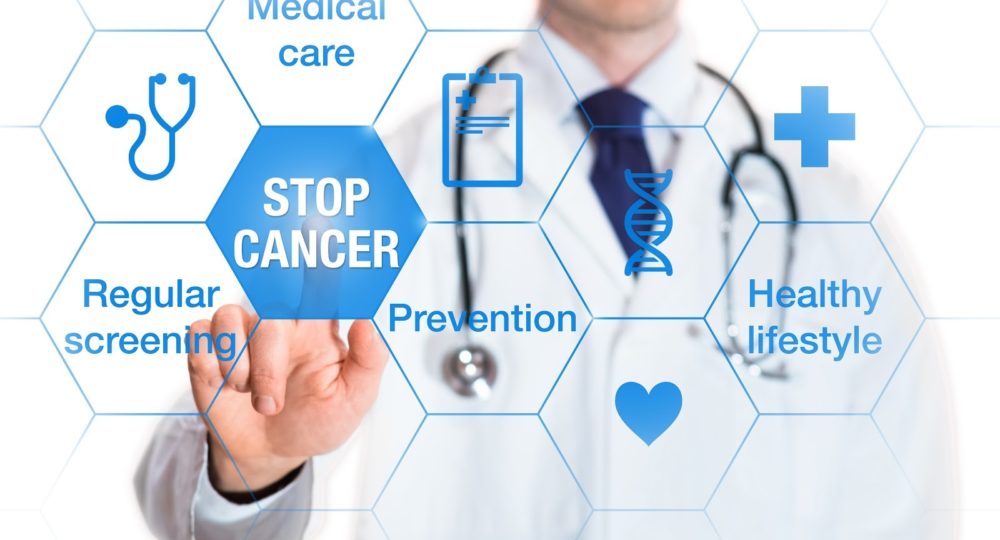According to the American Cancer Society, it is estimated there will be approximately 82,000 new cases of bladder cancer diagnosed in the United States in 2018 and approximately 17,000 deaths.
You usually do not hear a lot about bladder cancer in the news although it is a very common type of cancer and Bladder Cancer Awareness Month is the perfect time to share education and resources about Bladder Cancer.
Did you know bladder cancer is the fourth most common type of cancer found in men but is typically less common in women?
The ACS reports the risk of developing bladder cancer in one’s lifetime is about 1 in every 27 men as opposed to 1 in every 89 women and bladder cancer is more commonly diagnosed in Caucasians.
What are the risk factors for developing Bladder Cancer?
- Smoking: Many people are not aware that smoking increases your chances of developing bladder cancer. Typically people associate smoking with Lung Cancer but not Bladder cancer. According to the ACS, those who smoke are three times (3X) more likely to develop bladder cancer than non-smokers.
- Exposure to Chemicals in the Workplace: Industries that make rubber, leather, textiles and paint can be exposed to dangerous chemicals that could cause bladder cancer. These chemicals are called aromatic amines and include benzidine and beta-naphthylamine. Additionally, machinists, hairdressers and truck drivers are believed to have an increased risk due to hair dyes and diesel fumes but those who smoke and have exposure to chemicals in the workplace have an extra high risk of developing bladder cancer. For more information about exposure to chemicals in the workplace visit the ACS website.
- Medicine/Herbal Supplements: According to the US Food and Drug Administration those using a diabetes medication called Actos (pioglitazone) for more than a year may be linked with an increased risk of bladder cancer but additional research is needed. Additionally, the ACS reported dietary supplements that contain aristolochic acid have been linked with an increased risk of urothelial cancers including bladder cancer.
- Arsenic in Drinking Water: Although drinking water is not a major source of arsenic, there are some parts of the world where this could be a concern. The ACS indicated it depends on where you live and whether you get your drinking water from a well or public water system.
- Not Drinking enough Fluids: Drinking a lot of fluids, particularly water, can help prevent chemicals from staying in ones bladder for too long according to the ACS. By drinking a lot of fluid you are more apt to empty your bladder regularly which may reduce your cancer risk.
- Chronic Bladder Infections or Irritations: Per the ACS those experiencing chronic urinary infections, kidney and bladder stones or bladder catheters that have been left in place for a long time or other causes of chronic bladder irritation have an increased risk of developing bladder cancer.
- Personal History of Bladder Cancer: It is not uncommon for those with a previous diagnosis of bladder cancer to have subsequent bladder cancers diagnosed even if the first tumor is completely removed. When someone is diagnosed with bladder cancer they have routine follow-ups consisting of repeat cystoscopies in order to closely monitor for additional tumors.
According to the ACS there are other personal risk factors such as birth defects, genetic history, family history, age, race and ethnicity all of which can play a part in your overall risk for bladder cancer.
What are the possible signs and symptoms of Bladder Cancer?
According to the Bladder Cancer Advocacy Network the most common signs and symptoms of Bladder Cancer are:
- Blood in urine
- Painful urination
- Urgent need to urinate
- Feeling like you have to urinate but unable to do so
- Abdominal pain
- Fatigue
- Lower back pain
- Appetite or weight loss
How is Bladder Cancer Treated? There are various treatments available for bladder cancer and patients could receive one or more of the treatment options below. Treatment is based on the type and grade of the tumor as well as the stage.
- Transurethral Resection of the Bladder Tumor (TURBT) – Surgical procedure that does not require an incision. For more information about the TURBT procedure click here for a helpful resource from the BCAN.
- Intravesical Immunotherapy – anti-cancer fighting agents are delivered to the bladder through a catheter and help kill cancer cells.
- Cystectomy – partial or total surgical removal of the bladder.
- Chemotherapy – either neoadjuvant (administered before surgery) or adjuvant (administered after surgery)
- Clinical Trials/Palliative Care: these forms of treatment would be offered for late stage cancers or for failed attempts with other treatment modalities.
There are many educational resources available for bladder cancer some of which include:
- Urology Care Foundation: https://www.urologyhealth.org/
- Bladder Cancer Advocacy Network: https://www.bcan.org/
- American Cancer Society: https://www.cancer.org/cancer/bladder-cancer.html
If you or a family member have been diagnosed with bladder cancer, there are also many ways to get involved and help educate and advocate for this very important cause. Visit the websites above to learn more about volunteer opportunities and other ways to support further research and awareness about bladder cancer.





